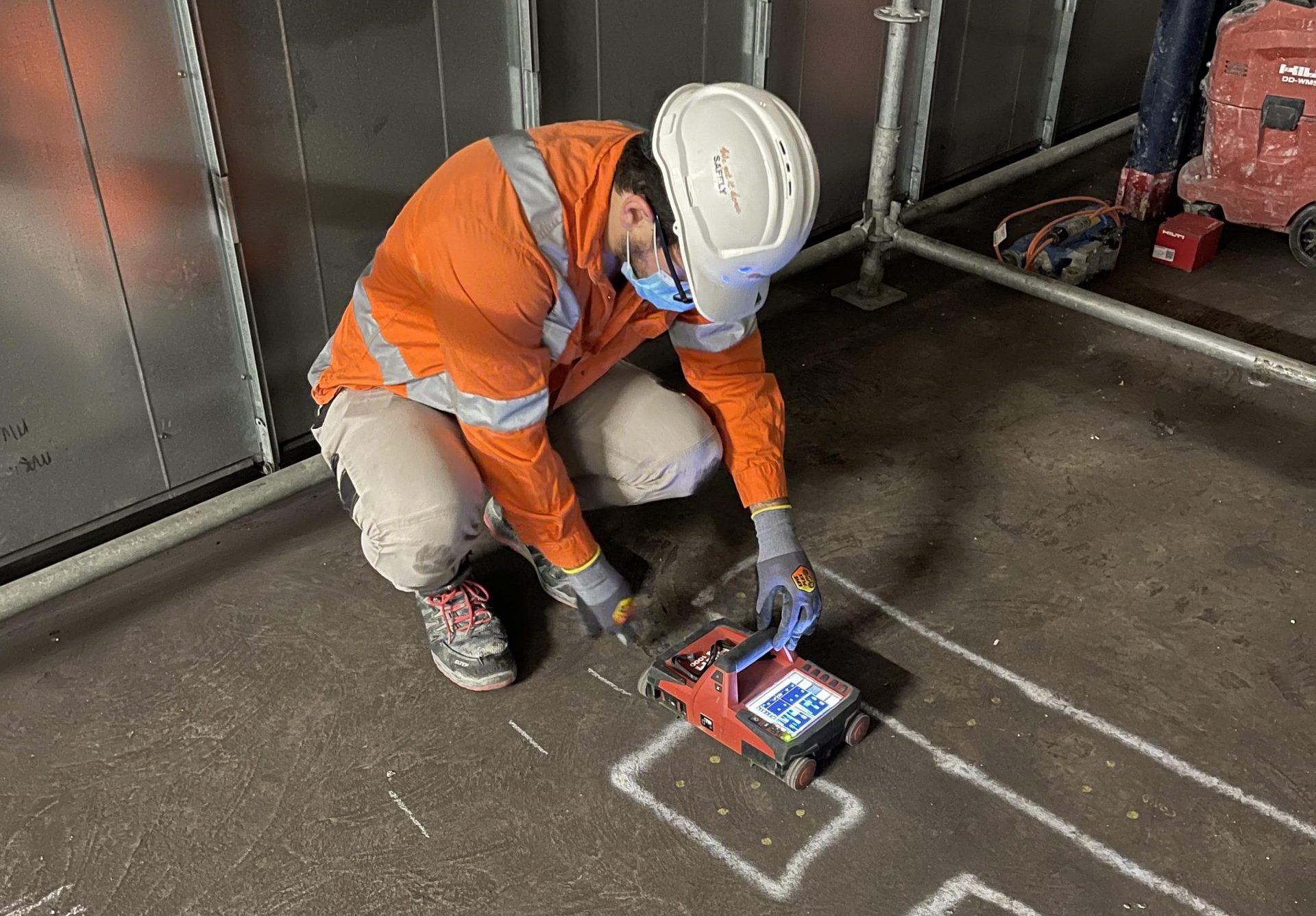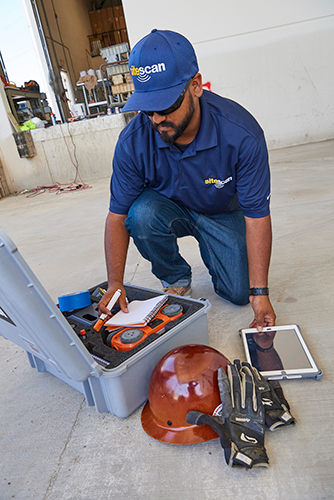Specialist Tips for Optimum Concrete Scanning Outcomes
Specialist Tips for Optimum Concrete Scanning Outcomes
Blog Article
Reveal the Transformative Power of Concrete Scanning in Optimizing Performance and Safety
Concrete scanning has arised as an important device in the construction market, using unequaled advantages in boosting job performance and guaranteeing safety and security requirements. The transformative power of concrete scanning lies in its capability to provide thorough insights and real-time data, changing just how jobs are planned and carried out.
Value of Concrete Scanning
Ensuring the structural stability and security of construction projects begins with the essential step of carrying out detailed concrete scanning. Concrete scanning is a non-destructive method made use of to spot and map subsurface components within concrete structures. This process is important in recognizing possible threats, such as rebar, post-tension wires, and channels, that might be hidden within the concrete. By using advanced modern technologies like ground-penetrating radar (GPR) and electro-magnetic induction, building and construction teams can properly situate these aspects without causing any type of damages to the structure.
Furthermore, concrete scanning assists in maximizing task timelines and spending plan by preventing unanticipated costs and delays that may emerge due to unpredicted blockages within the concrete. Inevitably, investing in detailed concrete scanning is an aggressive method that boosts both effectiveness and safety and security in building and construction projects.
Exactly How Concrete Scanning Works
Concrete scanning operates as a critical tool in building and construction jobs by utilizing innovative modern technologies to identify and map subsurface elements without triggering structural damages. Ground Passing Through Radar (GPR) and Electromagnetic Induction (EMI) are two key techniques used in concrete scanning.
Throughout the scanning procedure, the information gathered is analyzed in real-time, allowing immediate identification of potential dangers or obstacles below the surface. This info help in decision-making, ensuring that building and construction activities proceed safely and efficiently. In addition, 3D imaging software can be made use of to develop in-depth maps of the subsurface elements, better improving task planning and execution. By employing these advanced technologies, concrete scanning considerably reduces the risk of pricey problems and injuries on construction sites.
Advantages of Concrete Scanning
One of the primary benefits of concrete scanning is the capability to spot and find ingrained things such as rebar, post-tension cable televisions, and avenues precisely. Concrete scanning helps in preparation and designing extra efficiently, as it supplies accurate info about the location and deepness of architectural components.

Case Studies: Concrete Scanning Success

In another situation, a building business utilized 3D concrete scanning to examine the problem old concrete structures in a historical structure. The detailed scans given valuable understandings right into the extent of degeneration and assisted focus on upkeep initiatives successfully. By proactively resolving areas of concern recognized through scanning, the business had the ability to extend the life-span of the structure and make sure passenger safety and security.
These situation research studies underscore the transformative power of concrete scanning in boosting performance, precision, and safety and security in building jobs.
Implementing Concrete Scanning in Projects
Applying innovative scanning technologies throughout construction projects has official website actually ended up being increasingly crucial for boosting accuracy and safety. By incorporating concrete scanning right into job preparation and execution, building teams can recognize possible dangers, such as rebar or post-tension cable televisions, concealed within concrete frameworks. This positive technique decreases the risk of crashes, delays, and expensive rework, eventually bring about extra efficient task timelines and spending plans.
To carry out concrete scanning properly, task managers need to work together closely with skilled scanning experts to establish the most ideal scanning strategies for the particular job needs. Engaging scanning experts from the beginning of a job makes it possible for the team to create detailed scanning plans that address essential locations of issue and make certain comprehensive data collection.
In addition, including concrete scanning into routine project operations can enhance decision-making procedures, as real-time check information gives immediate insights right into the condition of concrete frameworks - Concrete Scanning. This data-driven method facilitates educated analytical and allows teams to make changes promptly, fostering a society of effectiveness and safety and security throughout the job lifecycle

Verdict
In verdict, concrete scanning plays an essential role in boosting efficiency and safety and security in construction jobs. By using advanced technology to identify and map out underlying structures within concrete, this procedure helps to stop expensive blunders, Website guarantee architectural honesty, and lessen dangers on site. With the ability to uncover concealed aspects and give accurate data, concrete scanning shows to be a beneficial device for optimizing task end results and making best use of total success.
Concrete scanning is a non-destructive approach utilized to detect and map subsurface elements within concrete structures. Furthermore, concrete scanning aids in maximizing task timelines and budget by preventing unexpected costs and hold-ups that might emerge due to unforeseen obstructions within the concrete. One noteworthy instance research study includes a large-scale restoration job where concrete scanning played an essential duty in making certain task success.In another instance, a building and construction business utilized 3D concrete scanning visit this site right here to evaluate the condition of aging concrete structures in a historical structure. By integrating concrete scanning right into task planning and execution, building teams can recognize potential threats, such as rebar or post-tension cords, concealed within concrete frameworks.
Report this page